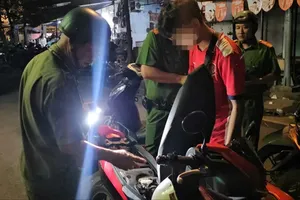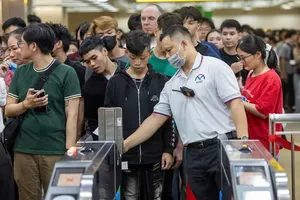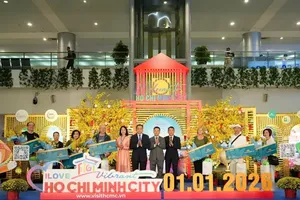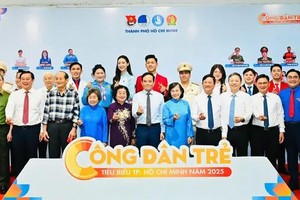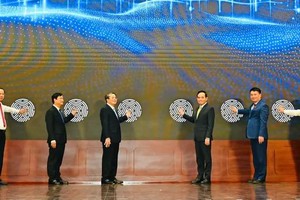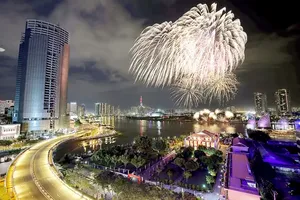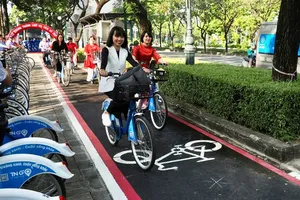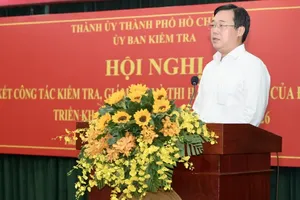
Speaking at the meeting, Secretary of the Ho Chi Minh City Party Committee Nguyen Thien Nhan said for years, Ho Chi Minh City has not pay heed to service infrastructure zoning; accordingly, the city authorities organized the meeting with the participation of local and international experts in the field to clarify the rules of service infrastructure growth for the synchronicity in land zoning and how to convert available land into service infrastructure.
Moreover, he wanted international experts to share experience in creating land and housing fund for service infrastructure.
Mr. Nhan expected that the seminar would give light to city authorities in good preparation of service infrastructure to pave the way for further growth. He also believed that HCMC authorities would learn more experience from international experts of the World Bank, the New South Wales Department of Planning, Industry and Environment, the South Korea Traffic Research Institute and other experts.
Director of the municipal Department of Planning and Architecture Nguyen Thanh Nha said for years, service infrastructures have had outstanding contribution to the city’s economic structure which has shifted to a service –industry- agriculture base. Subsequently, in 2018, service sector accounted for 62.4 percent in the city’s Gross Regional Domestic Product (GRDP).
The city’s economic structure has gradually increased proportion of high quality services with good added value comprising of finance- banking - insurance; commercial; tourism; transportation, warehousing and wharf; post and telecommunication; property business; consultancy; IT and Technology; Education and Training.
Proportion of nine major services has made up 57.1 percent in GRDP with 33.4 percent of property business, commercial and transportation-warehousing.
World Bank’s senior expert Zhiyu Jerry Chen said the city’s service sector has made breakthrough in the city’s economic sector, equaling with other countries in the world. It has helped to increase service sector of neighboring provinces including the southern provinces of Binh Duong and Dong Nai as well as Mekong Delta regions.
A representative from the municipal Department of Industry and Trade provided figures of logistics including transportation, warehouse, distribution , production to consumption, and local – international market connection.
Statistically, HCMC is leading the South economic region with 75 percent of the country’s service suppliers being located in HCMC and commodity volume in HCMC accounting for 40 percent of the South region as well as contributing 35 percent to the country’s transportation revenue.
However, the city’s stagnant infrastructure can’t catch up with service growth. Worse, the city has not had a logistics center which meet standard and the city just has three wholesale market to distribute 10,000 tons of commodities a night to earn VND400 billion.
What is more, the city has organized 600 exhibition festivals yearly but just only on the area of 10,000 sq.m while others are organized in stadium, children house, said the representative. Therefore, the city should zone land fund and hire land so as to meeting fast development demand.
Another sector which has contributed much to the city’s economic development is facing infrastructure congestion. Director of the Department of Tourism Bui Ta Hoang Vu said the city welcomed 5.2 million international visitors and 20 million local travelers in 2016 while the number of foreign and Vietnamese holiday-makers increased to 7.5 million and 25 million respective in 2018.
Mr. Vu continued that according to a latest report of Tourism and Travelling Organization, HCMC will be one of three out of 20 cities in the world experiencing a boom in tourism by 2020. However, the city’s tourism sector is facing stagnant traffic infrastructure. The city has lots of rivers but there has been no river traffic infrastructure; hence, the city authorities should act to help the smokeless industry to take off.
Addressing the meeting, Deputy Chairman of People’s Committee Vo Van Hoan said that city authorities will connect all sectors plus IT application and urban traffic development. Moreover, the city will use land properly to grow service infrastructure.
He hoped that managers in state sector to change their ways of doing things to satisfy city dwellers’ expectations. Last but not least, there should be the preferential policies of land use, tariff, to promote infrastructure investment and then push up service development – the city’s strategic plan in the future.


